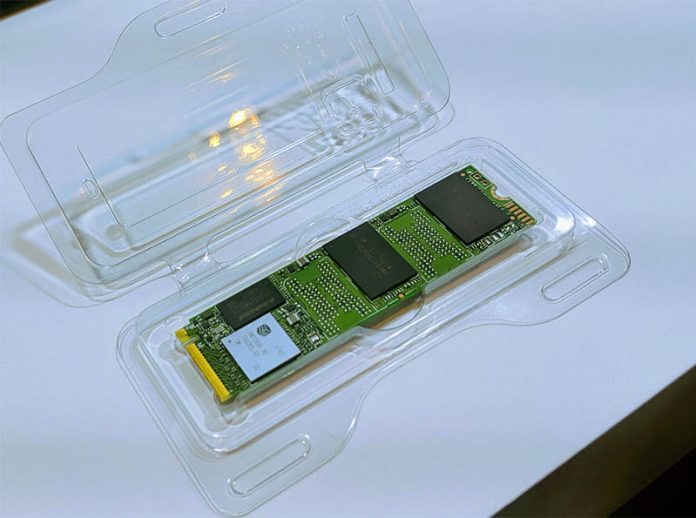At Intel Memory and Storage Day 2019 in Seoul, the company showed off its newest 96-layer QLC products and showed its plan for even higher 144-layer QLC in 2020. The company also previewed how its NAND technology will lead to better QLC and future 5 bits per cell NAND.
Intel 665p NVMe QLC SSD
At the Memory and Storage Day 2019, the company showed off the Intel 665p NVMe SSD. This is a new 96-layer QLC drive that is set to go into production in Q4 2019 and replace the Intel 660p NVMe SSD.
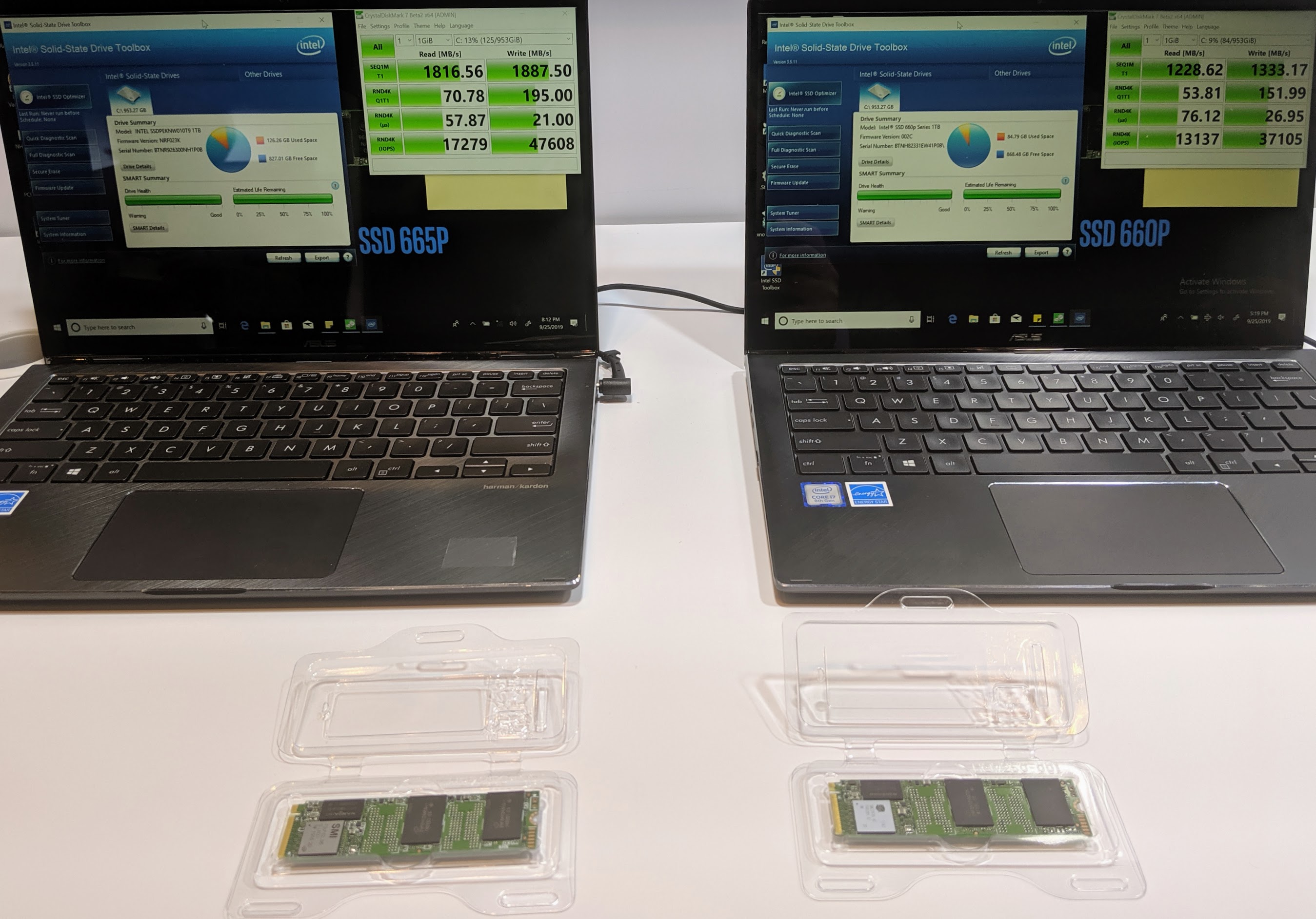
Intel had a live demo of the drives using CrystalDiskMark. We were told that these are not the official performance numbers, but that the new 665p will be faster than its predecessor across the board. You can click the image above and see the ~1.3GB/s to ~1.8GB/s sequential speed increase generation on generation.
Intel Floating Gate Cell Technology Powering 4 bits/ cell and Beyond
One of the other key points of the demo was Intel’s technology driving its NAND roadmap. For 2019, the company is transitioning to 96-layer QLC NAND. It is also on a path to deliver 144-layer NAND in 2020.
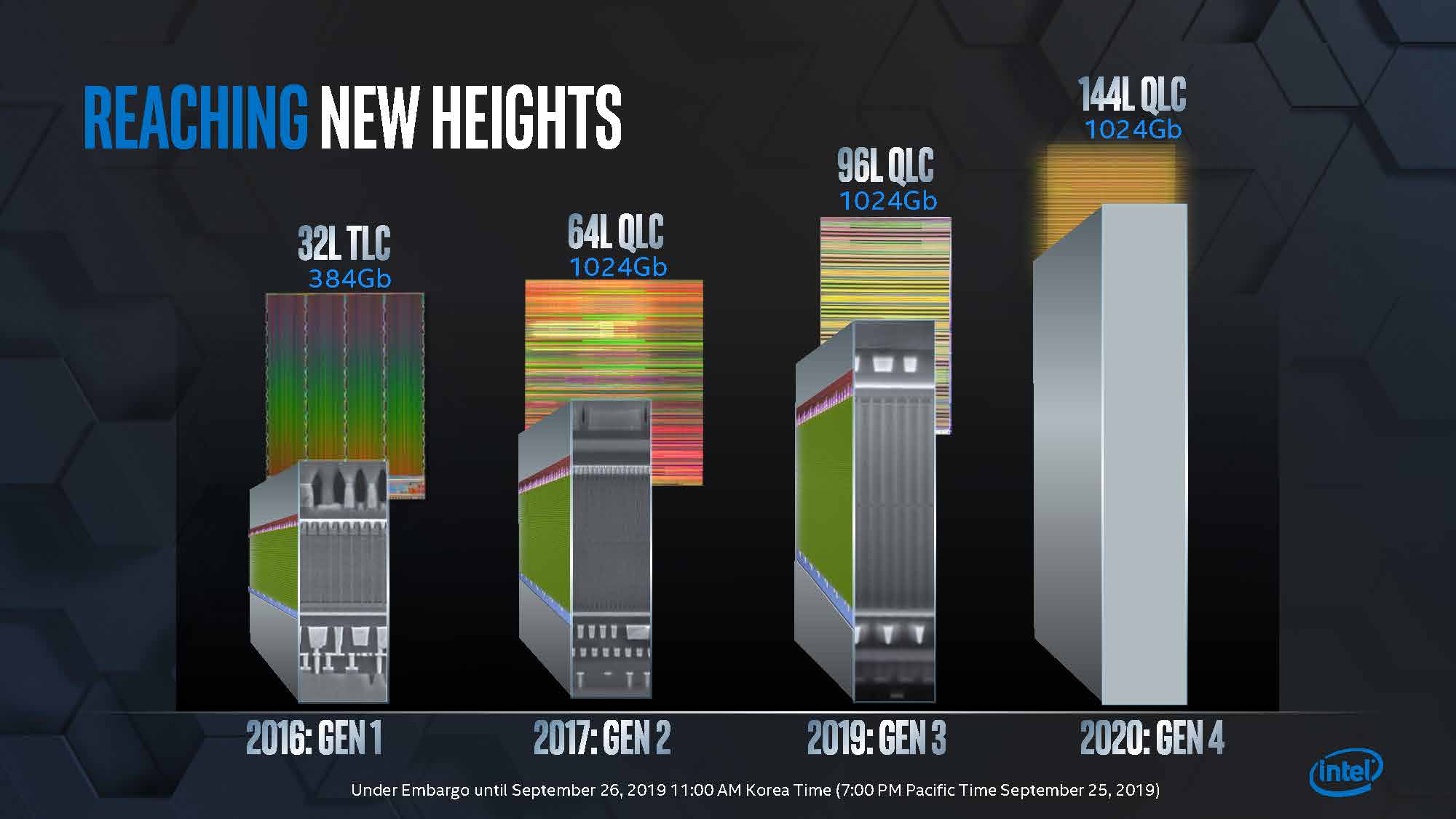
Part of the advantage that Intel is touting is its floating gate cell design. It says that it does a better job of retaining data reliably than charge trap flash that other vendors are using.
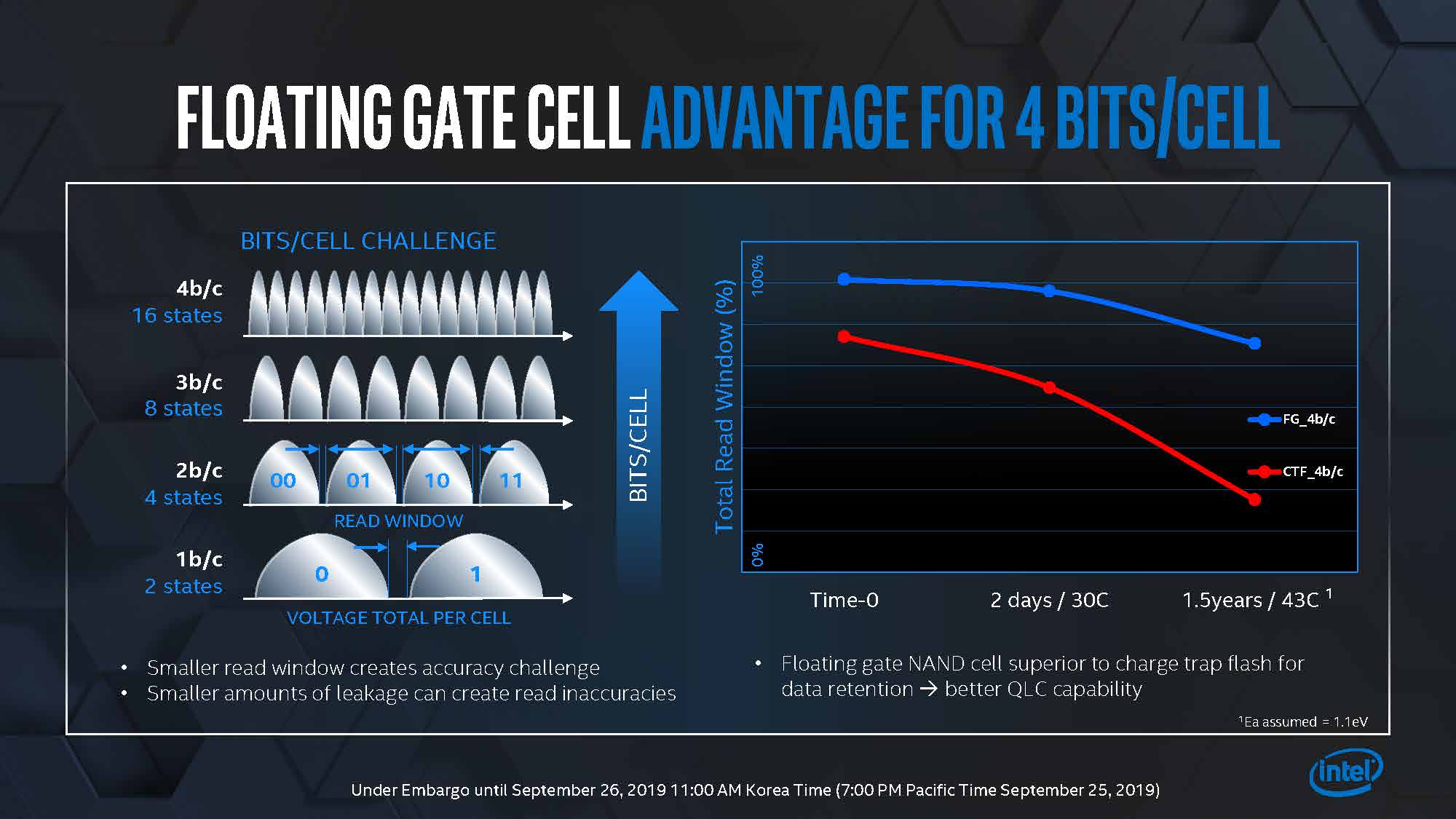
It is also saying that the floating gate technology will go beyond QLC or 4 bits per cell NAND. Intel believes that this will scale to 5 bits per cell that will require the NAND controller to reliably store and read 32 charge states from the media.
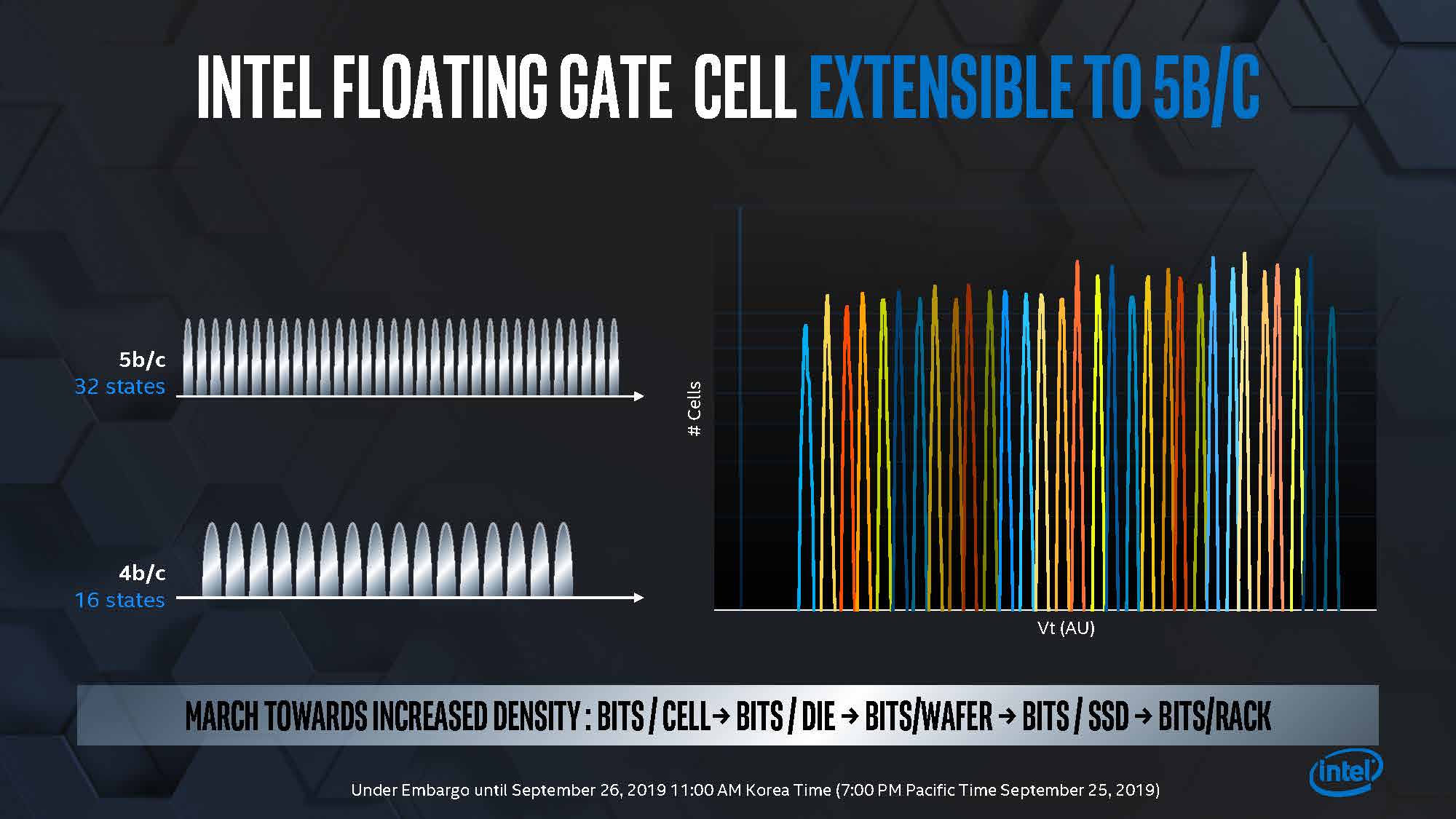
5b/c NAND will see another major leap in capacities as Intel pushes harder to relegate hard drives to cold storage.
Arbordale+ in the Data Center
This new QLC NAND will lead Intel’s next-gen data center SSDs that will come with the next-generation Intel Xeon generations in 2020. Intel said that in this generation it is no longer leading with MLC or TLC. Instead, with Ice Lake/ Cooper Lake, we should see QLC drives codenamed “Arbordale+” lead the company’s efforts. 144-layer Arbordale+ QLC data center SSDs should bring higher densities and higher performance.
Final Words
Overall, this is a natural progression of NAND products with higher densities. Intel tends to focus on long term data retention and reliability which it is showing with its floating gate design. If it is able to drive increased densities and performance then that will continue to marginalize hard drives to cold storage applications.

